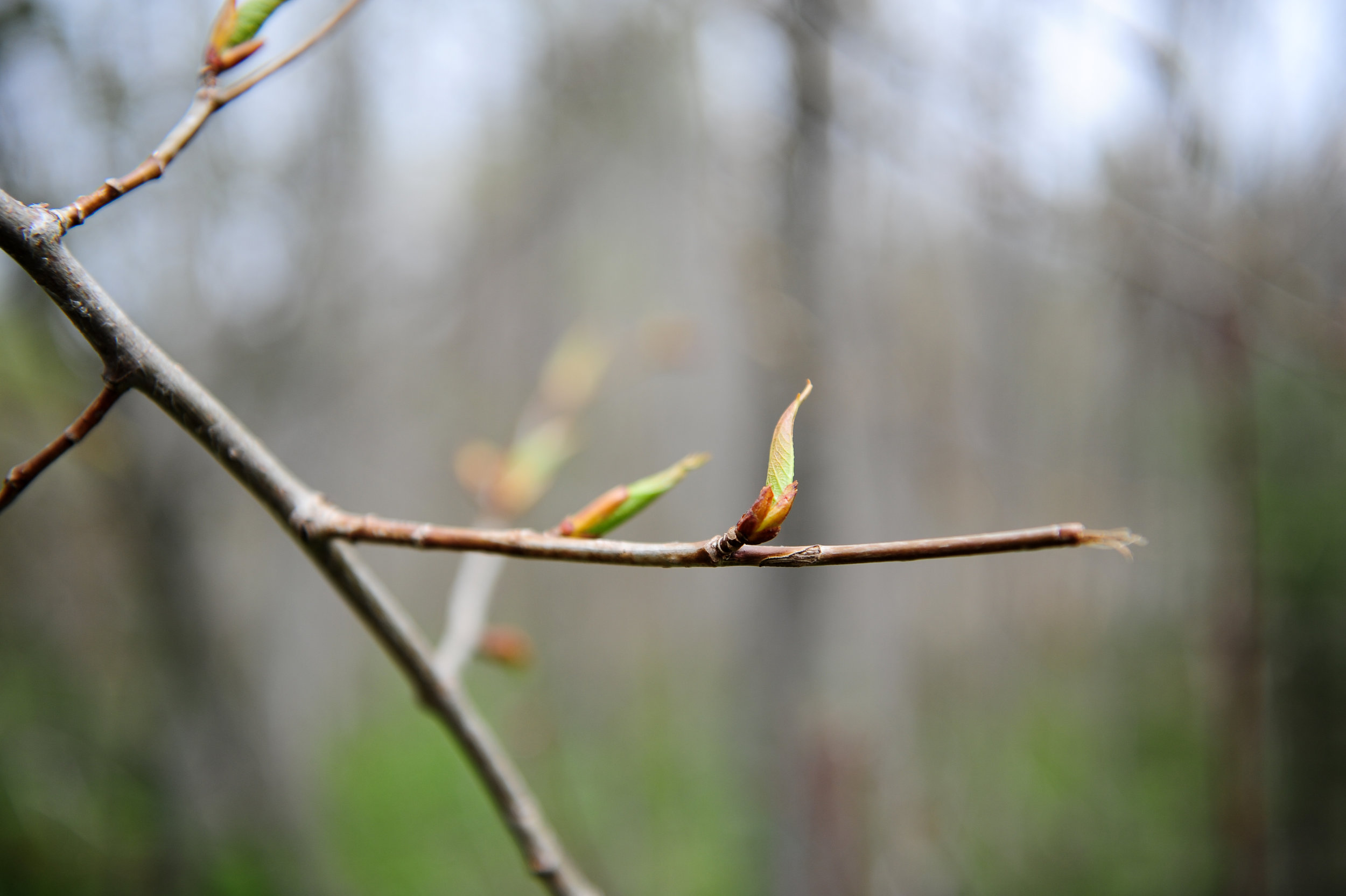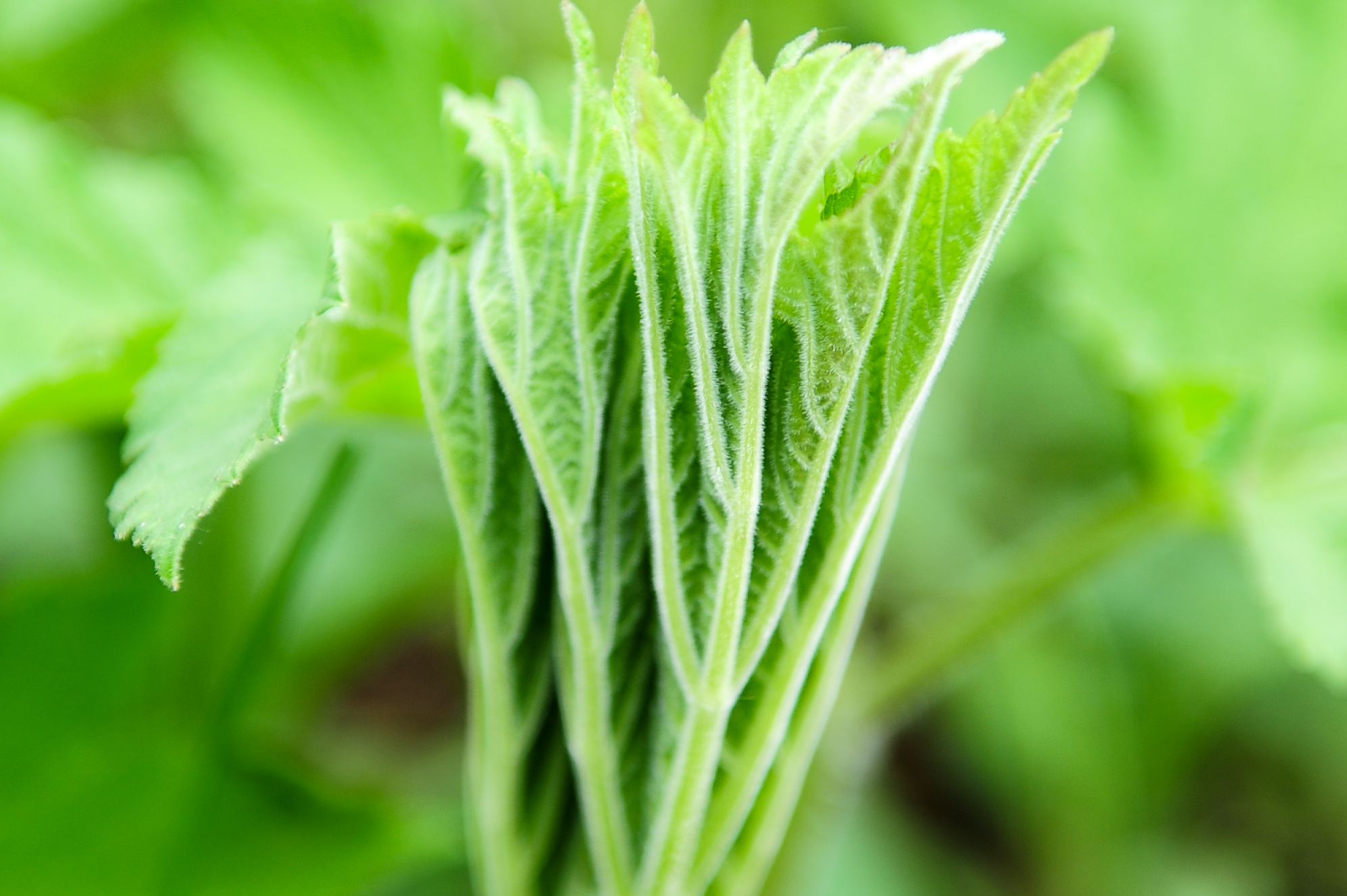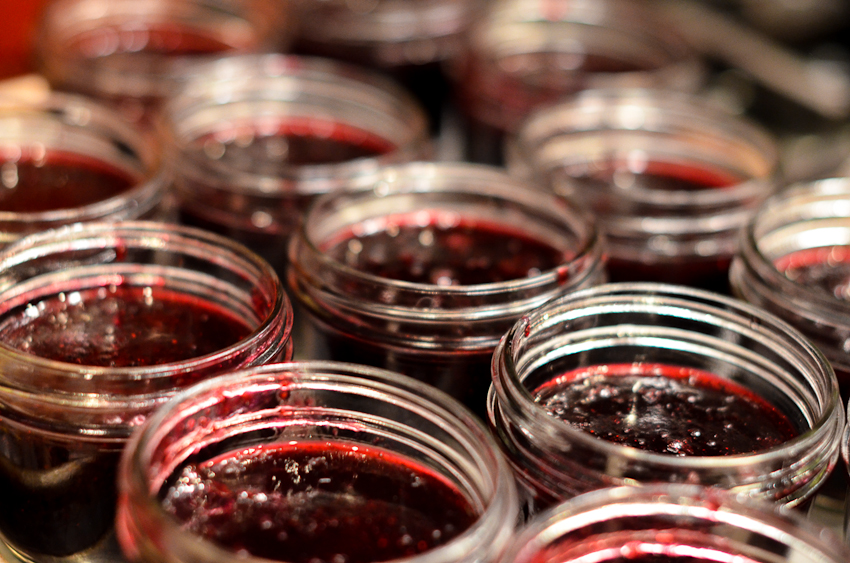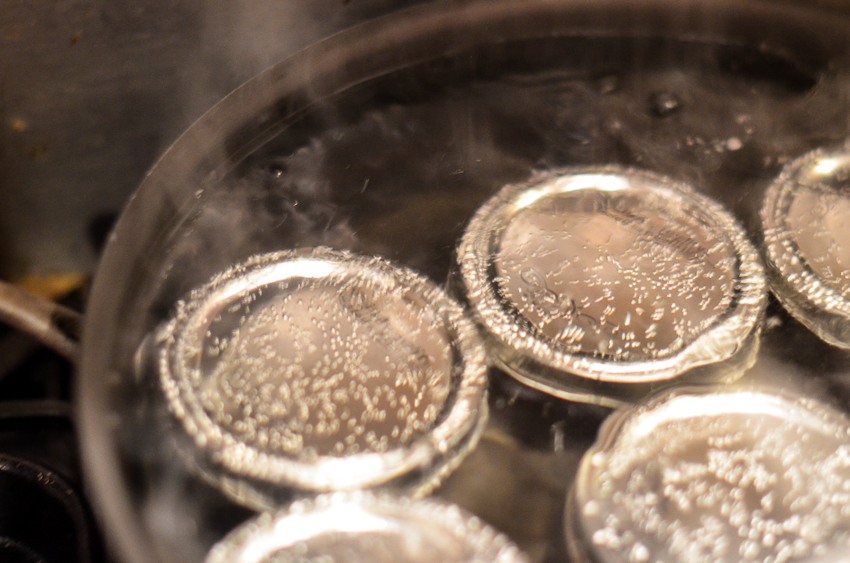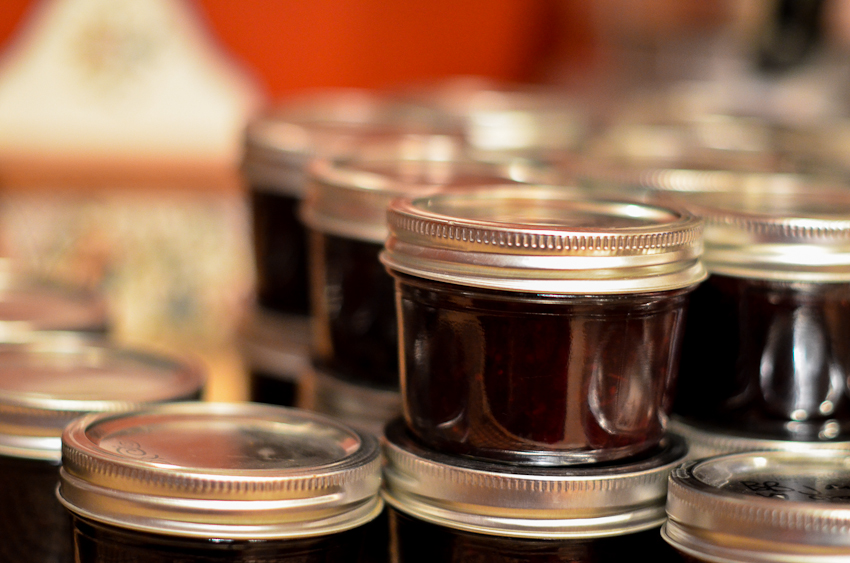My husband, Ted, asked me if I wanted to go for a ride. Now, if he posed that question to George, our yellow Lab, it would mean a trip to the beach was in order but since it was a September afternoon,
Read MoreCookery Maven Blog
Gathering For The Table
Foraging and gathering— two beautiful words that have been lost in an increasingly noisy, busy and disconnected world. Somewhere in the midst of our cold and white winter, Ellen and I dreamed up a cooking and foraging class at her farm on a beautiful summer night.
Read MoreA Field Of Ramps, A Few Fiddleheads & Ham Salad
Last year my friend, Kathy, stopped at the house with a bundle of wild ramps (read about it here). That bundle of ramps seemed like a magical gift from the forest— a bit wildness in my kitchen waiting to feed us with its memories of spring water and emerging life. This year, I wanted to find my own secret patch but had no idea where to start. Foraging would not make the list of the top 100 skills Mary Dougherty possesses but I was eager to learn. As usual, I had everything I needed right in front of me.
Ellen and her husband, Eric, own Blue Vista Farm (read about our blueberry picking adventure here) and not only is she a maven of healing plants, she one of my dearest friends. She just completed her Earth Medicine Apprenticeship and when she graciously agreed to share her spot with me, I knew it was going to be good. We hiked into the woods, over a log and into a field of ramps that blew my mind— it was a patch of spring green leaves with an aroma of wet forest floor and wild onions.
Ellen found some wild currant plants on our way through the forest. It was enlightening to spend a couple of hours with her. She has a strong connection to nature and it was fun to learn a little about the plants I see everyday. We're doing a cooking class on July 12, Gathering for the Table: Celebrating the Sacred in our Food, at Blue Vista Farm. I can't wait to cook freshly foraged greens and have dinner in her garden, overlooking the Lake. It's going to be an amazing night.
Ellen's patch of ramps was epic— they were everywhere I looked. Ramps grow slowly and are sensitive to over harvesting. A good rule of thumb is a ratio of 1 to 20 (harvest one and leave 20).
We found this Robin's egg on our way back to the car— a good omen for the new beginnings we are blessed with every spring.
Why ham salad, you ask? There are two reasons— I love ham salad (made with Hellman's) and ramps are the perfect substitute for green onions. My Mom used to make ham salad, with a manual meat grinder that she clamped on the counter, after Easter every year. I can't say it was one of my favorite foods growing up but like blue cheese and pâté, it grew on me as I grew up. I made a sandwich yesterday with lettuce, tomato and ham salad that rocked (an HSLT sandwich) but it's really good spread on Ritz crackers as well.
Ham Salad With Ramps
1 pound ham, cubed
3 tbsp. capers, chopped
8 pickled jalapeno, chopped
4 tbsp. ramp leaves, finely chopped
1/4 cup ramps (white and light pinks parts), chopped
1/8 cup red onion, chopped
1/2 cup Hellman's mayonnaise
2 tbsp. Dijon mustard
Kosher salt and pepper, to taste
Preparation
Place ham in a food processor and pulse until roughly chopped. Transfer to a large bowl, add all other ingredients and stir to combine thoroughly. Taste for salt and pepper and chill for at least 2 hours. Keeps for about a week, covered, in the refrigerator.
Chipotle & Blueberry Chutney
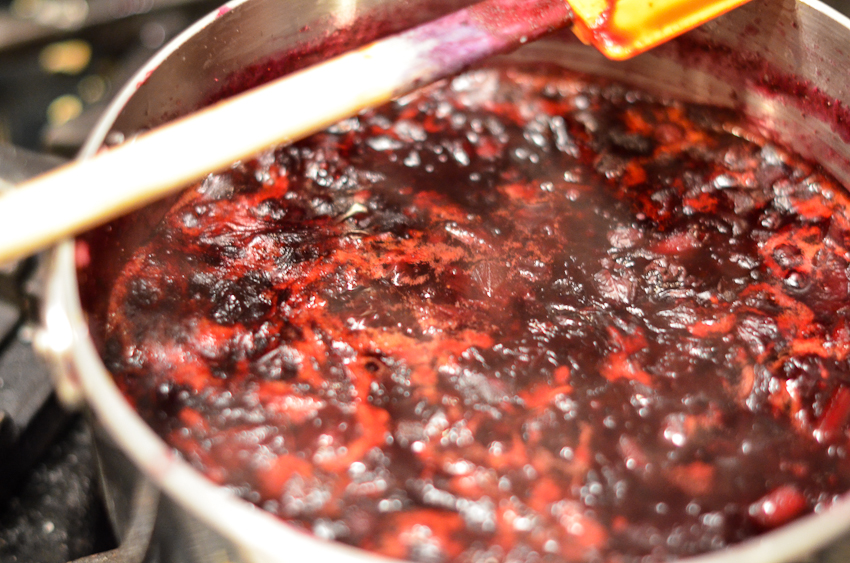 One of my favorite flavor combinations is a little sweet and a little heat. I am particularly fond of chipotle peppers en adobo—the smoky notes hit your palate first and finishes with a mellow heat. Back in the good old days of summer, when there were pounds and pounds of blueberries in the freezer, I thought blueberries and chipotles would make a sweet chutney with a little smoky heat. Since I was feeling like quite the capable little canner— I steamed full speed ahead with my blueberry chipotle chutney. It turned just as I hoped— layers of flavor with a slow burn on the finish.
One of my favorite flavor combinations is a little sweet and a little heat. I am particularly fond of chipotle peppers en adobo—the smoky notes hit your palate first and finishes with a mellow heat. Back in the good old days of summer, when there were pounds and pounds of blueberries in the freezer, I thought blueberries and chipotles would make a sweet chutney with a little smoky heat. Since I was feeling like quite the capable little canner— I steamed full speed ahead with my blueberry chipotle chutney. It turned just as I hoped— layers of flavor with a slow burn on the finish.
Chipotle & Blueberry Chutney
5 cups fresh blueberries 2 medium apples, peeled and chopped 1 medium red onion, chopped 1 tbsp ginger, peeled and minced 1 tbsp garlic, minced 3 tbsp orange rind, minced 1 tbsp yellow or brown mustard seeds 1/2 cup apple cider vinegar 1/2 cup honey (more to taste depending on how sweet the blueberries are) 2 - 3 chipotle chiles in adobo, chopped 1/2 tsp kosher salt
Add all ingredients to a large pot and bring to a boil. Reduce the heat to low and simmer, stirring occasionally, for 30 – 45 minutes, until mixture is thick. At this point, you can cool completely and it will keep in the refrigerator, covered, for up to a week.
You can also ladle hot chutney into hot sterilized jars, leaving 1/4-inch head space. Wipe rims of the jars, cover with lids, and screw bands on until just barely tight. Place jars on rack in pot and cover completely with water. Cover pot and bring to a boil over high heat. Boil for 10 minutes. Turn off heat, uncover pot, and allow jars to rest in water for five minutes. Remove jars from pot and allow them to rest undisturbed on countertop for six hours or overnight.
Blue Vista Blueberries & Blueberry Orange Jam

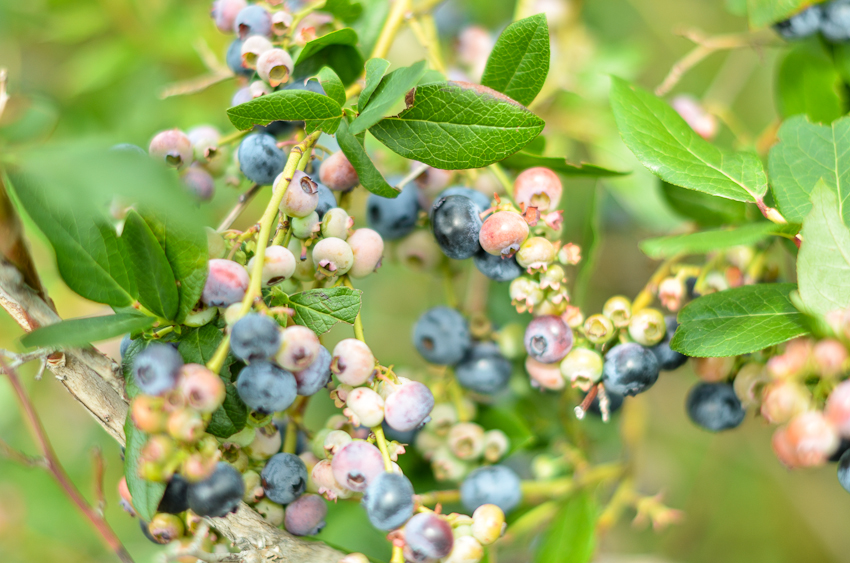 Judging from the bushes at Blue Vista Farm, it was a good year for blueberries. We picked over 40 pounds, brought them home and realized 40 pounds is A LOT of blueberries. We froze some, ate some and decided to make jam. Sounds easy, right? Boil some berries, add sugar and pectin and call me Mrs Smucker with jars of jam in a row. We had a few detours on the road to jam perfection. After a few phone calls, a chance meeting at the IGA with the local jam guru and internet searches, we did end up with pretty little jars of jam in a row.
Judging from the bushes at Blue Vista Farm, it was a good year for blueberries. We picked over 40 pounds, brought them home and realized 40 pounds is A LOT of blueberries. We froze some, ate some and decided to make jam. Sounds easy, right? Boil some berries, add sugar and pectin and call me Mrs Smucker with jars of jam in a row. We had a few detours on the road to jam perfection. After a few phone calls, a chance meeting at the IGA with the local jam guru and internet searches, we did end up with pretty little jars of jam in a row.
My Mom has been making jams and jellies for years, one of the benefits of owning a raspberry farm. My kids refer to it as, "Nana's jelly' and since we moved away, we can't stock up whenever we run out. It was time we learned to make our own jam. Sadie went on the internet and researched a few recipes (she settled on this recipe from Paula Deen) and I found a recipe for blueberry jam with orange and ginger. We went down to the IGA, bought some pectin, jars and sugar and armed with our recipes, started to make our first batch of jam.
Road block number one soon presented itself. Sadie's recipe called for liquid pectin and my recipe called for low sugar pectin. I had no idea there were choices in pectin land and I bought the powdered Sure-Jell in the yellow box because that was what my Mom used. Sadie tried to find a conversion for liquid to powdered pectin on Google but didn't have much luck so we decided to 'wing it'. Which led to road block number two— there is no 'winging it' with jam making. We thought Deen's recipe had too much sugar and I decided to substitute half the sugar in my recipe with honey. Little did I know there is an important relationship between pectin and sugar— too little sugar or pectin results in a sauce for ice cream or pancakes, not jam for toast.
At this point, Sadie called Nana. The jam was super runny and we weren't sure if we should put it in the water bath and hope for the best or start over. Nana suggested adding more pectin and sugar, putting it in the jars and at the very least, blueberry sauce is good on ice cream. The next morning, we flipped the jars over, hoping for a solid mass of blueberry jam. No such luck, it was a little thicker but still runny. I decided to crack open all the jars, add more pectin and 'fix it'. Road block number three— it's tough to fix syrupy jam.
I went back to the IGA to buy more pectin. This time, I bought the liquid kind, thinking maybe it was the missing link. I ran into Nancy, the jam guru, and shared my tale of woe with her. Her first questions was, 'did you follow the directions?'. Remember the second road block, the 'winging it' one? I sheepishly admitted not only did we not follow the directions, we even made a few alterations. Her parting words were something like— honey, always follow the directions when making jam and I headed up the hill to try and get the jam to gel.
It worked, kind of. I opened all the jars, added more pectin until it looked more jelly like and gave it another bath in boiling water. Sadie's jam didn't completely gel and my jam eventually did set up (I think liquid pectin was the missing link). It all tastes good and looks beautiful. I love seeing all our jam lined up on the shelf. They are the result of a warm August afternoon picking blueberries at a friend's farm and an evening in the kitchen with the girls canning our first batch of jam. Another chapter in our family story, that's always a good thing.
Blueberry Orange Ginger Jam (Adapted from Serious Eats)
8 cups fresh blueberries 2 1/2 cups white sugar 2 cups honey 2 packages of Sure-Jell regular pectin Grated zest of one large orange 1/2 cup orange juice, freshly sueezed 1 tbsp ginger, grated 2 tbsp crystallized ginger, minced 1/2 tsp butter
If you are going to preserve jam, prepare jars and lids: place 8 half-pint jars on rack in large pot. Add enough water to cover jars, and bring to boil over high heat. Boil for 10 minutes, then turn off heat and allow jars to rest in the hot water. Meanwhile, put bands and lids in small saucepan and cover with water. Heat over medium heat until the water is simmering, then remove pan from heat and allow bands and lids to rest in hot water until ready to use.
Working in batches if necessary, pulse blueberries in blender until coarsely crushed. You should have about 6 cups.
Measure 2 1/4 cups of sugar and 2 cups of honey in one bowl. In another bowl, combine remaining 1/4 cup sugar and pectin.
Zest and juice orange. You should have 1/2 cup juice.
Combine blueberries, orange zest and juice, granted ginger, and crystallized ginger in large, heavy saucepan or stockpot. Stir in sugar-pectin mixture. Bring to a boil over high heat, stirring constantly.
Add remaining sugar all at once. Stir in butter and return to a full rolling boil. Boil for one minute. Remove jam from heat and skim off any foam from surface.
Ladle hot jam into hot sterilized jars, leaving 1/4-inch headspace. Wipe rims of the jars, cover with lids, and screw bands on until just barely tight. Place jars on rack in pot and cover completely with water. Cover pot and bring to a boil over high heat. Boil for 10 minutes. Turn off heat, uncover pot, and allow jars to rest in water for five minutes. Remove jars from pot and allow them to rest undisturbed on countertop for six hours or overnight.


